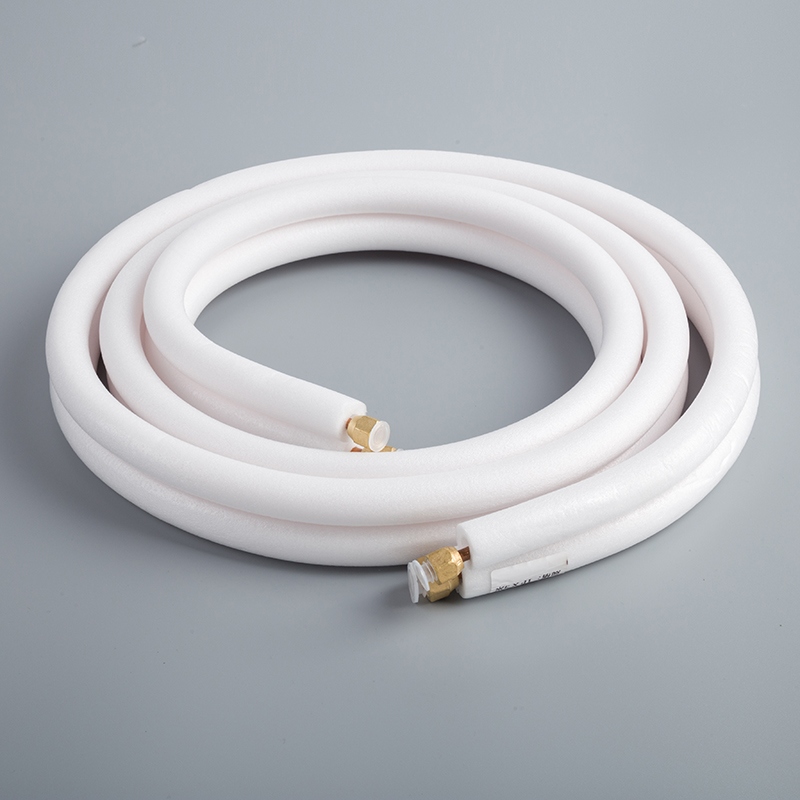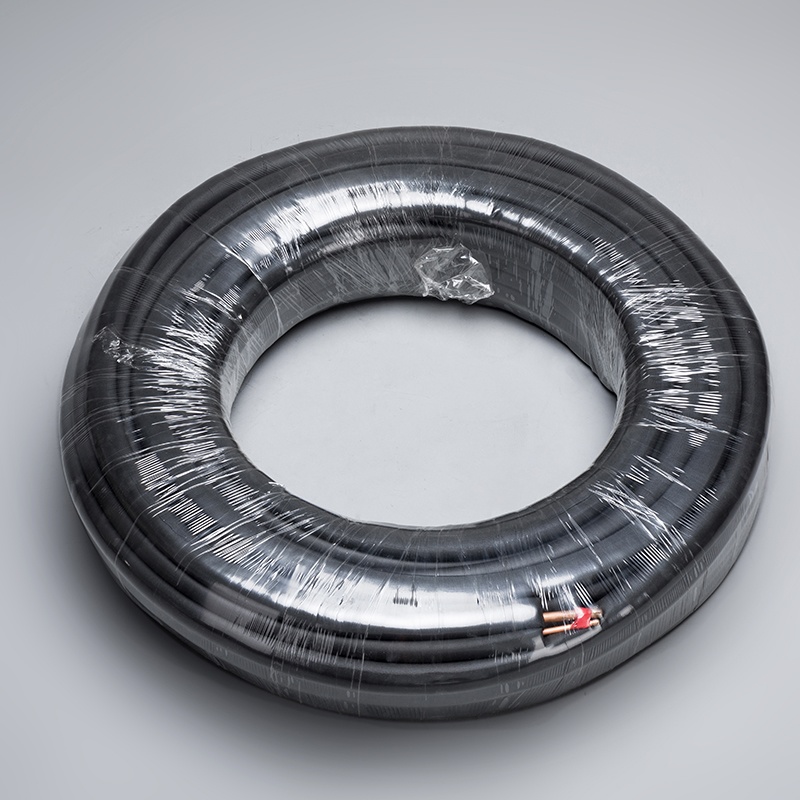What Drives the Cost of Copper Pipes in AC Systems

What Influences the Cost of Copper Pipes in Air Conditioning Systems
Copper pipes play a pivotal role in air conditioning systems, offering unparalleled benefits. The factors influencing the cost of copper pipes are multifaceted and dynamic. This blog aims to delve into these factors meticulously, shedding light on the intricate workings of the market. As the global demand for copper pipes continues to rise steadily, understanding the driving forces behind their costs becomes paramount for industry players and consumers alike.
Overview of Copper Pipes in AC Systems
Importance of Copper Pipes
Copper's Significance in Air Conditioning
Copper stands out as the material of choice for air conditioning systems due to its exceptional thermal conductivity and resistance to corrosion. Its ability to withstand large temperature variations without issues makes it a top contender in the industry.
Endurance and Longevity
The durability and longevity of copper pipes are unmatched, providing a reliable solution for air conditioning needs. With minimal maintenance requirements, copper pipes offer a long-term investment for both residential and commercial applications.
Common Applications in AC Systems
Residential Air Conditioning
In residential settings, copper pipes play a crucial role in ensuring efficient cooling systems. Their flexibility and reliability make them ideal for homes, contributing to comfortable indoor environments year-round.
Commercial and Industrial Use
The versatility of copper pipes extends to commercial and industrial air conditioning units. From office buildings to manufacturing facilities, copper pipes are integral components that support the smooth operation of HVAC systems.
Factors Influencing the Cost of Copper Pipes
Material Quality
Grades of Copper
Copper Grades: Vary in purity levels, influencing the final cost.
Higher Purity, Higher Cost: The more pure the grade, the higher the price due to increased quality and performance standards.
Alloy Variations: Different copper alloys can significantly impact pricing based on their unique properties.
Purity Levels
Purity Impact: The level of purity directly correlates with the cost of copper pipes.
Quality Assurance: Ensuring high purity levels is essential for meeting industry standards and ensuring optimal performance.
Cost Considerations: Higher purity comes at a premium, reflecting in the overall pricing structure.
Market Demand
Industrial Demand
Industry Needs: Industrial applications drive demand for copper pipes in bulk quantities.
Supply Chain Dynamics: Fluctuations in industrial requirements can affect market prices and availability.
Global Influence: International industrial demands play a crucial role in shaping the cost landscape.
Consumer Demand
Residential Usage: Consumer demand for air conditioning systems impacts copper pipe costs.
Seasonal Variations: Changes in consumer preferences throughout the year can influence market dynamics.
Market Response: Manufacturers adjust production based on consumer demand trends to meet market needs.
Historical Price Trends
Past Fluctuations
Historical Context: Understanding past price fluctuations provides insights into future trends.
Market Volatility: External factors like economic shifts contribute to historical price variations.
Lessons Learned: Analyzing past data helps anticipate potential changes and adapt pricing strategies accordingly.
Current Market Prices
Real-Time Data Analysis: Monitoring current prices is crucial for informed decision-making.
Price Transparency: Access to up-to-date market rates enables stakeholders to make strategic choices.
Dynamic Nature of Pricing: Constant evaluation of current prices allows for agile responses to market shifts.
Economic and Industrial Impacts
Economic Stability
Global Economic Health
Record-breaking Copper Prices: Amid speculations of supply shortages, the copper sector experiences a surge in prices driven by clean energy policies in the USA and Europe.
Low Stockpiles: Fear of supply shortages intensifies as many copper smelters face losses due to tight raw material supply.
Anticipated Demand Growth: The market foresees rising demand leading to potential supply shortages and price hikes.
Currency Exchange Rates
Market Dynamics: Fluctuations in currency exchange rates impact the cost of copper pipes globally.
Economic Trends: Changes in exchange rates influence the competitiveness of copper pipe pricing.
Supply Chain Impact: Currency fluctuations can affect the overall cost structure of copper pipes.
Industrial Growth
Expansion of HVAC Industry
Growing Sector: The HVAC industry expands, driving demand for copper pipes in air conditioning systems.
Technological Integration: Advancements in HVAC technologies increase the need for high-quality materials like copper pipes.
Market Evolution: The evolving HVAC landscape emphasizes the importance of durable and efficient components.
Technological Advancements
Innovative Solutions: Technological progress leads to enhanced manufacturing processes for copper pipes.
Efficiency Improvements: Advanced technologies optimize production, reducing costs and enhancing product quality.
Industry Adaptation: Manufacturers embrace technological advancements to meet the increasing demands for efficient air conditioning systems.
Consumer Spending Power
Disposable Income
Impact on Purchasing Decisions: Consumer disposable income influences investments in air conditioning systems using copper pipes.
Affordability Factors: Changes in disposable income levels affect consumer choices regarding HVAC solutions.
Long-term Investments: Consumers consider the durability and efficiency of copper pipes based on their disposable income trends.
Market Trends
"Copper prices are expected to rise in the short and medium term because demand is likely to continue growing at a higher pace than supply." - Copper sector: Record-breaking copper prices amid speculations of supply shortages
Summary:
The economic stability, industrial growth, and consumer spending power significantly impact the cost dynamics of copper pipes. Global economic health, currency exchange rates, expansion within the HVAC industry, technological advancements, disposable income trends, and market dynamics play pivotal roles in shaping the pricing strategies for these essential components.
Benefits of Copper Pipes

Energy Efficiency
Thermal Conductivity
Copper's Superiority in Air Conditioning Systems: Demonstrates the energy efficiency and cost savings of copper pipes in air conditioning systems.
Copper's exceptional thermal conductivity ensures efficient heat transfer within air conditioning systems, enhancing overall performance.
The ability of copper to withstand large temperature variations without issues contributes to its energy-efficient nature.
Reduced Energy Consumption
Air conditioning: Leading the way with copper pipes: Demonstrates the energy efficiency and cost savings of copper pipes in air conditioning systems.
By reducing energy consumption, copper pipes play a crucial role in promoting sustainability and cost-effectiveness in HVAC operations.
The decreased internal space of efficient copper pipes requires less refrigerant, leading to significant cost savings over time.
Cost Savings
Long-term Investment
Copper Pipes and Tubes Market Analysis: Provides insights into the increasing demand and market value of copper pipes and tubes.
Investing in copper pipes translates to a long-term commitment to quality, durability, and reliability in air conditioning systems.
The longevity and minimal maintenance requirements of copper pipes make them a valuable asset for sustainable HVAC solutions.
Maintenance Costs
Global Market Trends and Forecast: Provides insights into the increasing demand and market value of copper pipes and tubes.
Copper's resistance to corrosion reduces maintenance costs associated with air conditioning systems, ensuring prolonged operational efficiency.
Choosing copper pipes over alternatives results in lower maintenance expenses over the lifespan of HVAC installations.
In summary, the blog highlighted the pivotal role of copper pipes in air conditioning systems. The discussion encompassed factors like material quality and market demand that influence copper pipe costs. Looking ahead, future trends suggest a rise in copper prices due to growing demand. Understanding these cost drivers is crucial for industry stakeholders to make informed decisions and adapt to market dynamics effectively.
See Also
Benefits of Opting for Copper Tubing in Air Conditioning
Key Advantages of Copper Piping in Air Conditioning
Importance of Copper Tubes for Effective Air Conditioning


